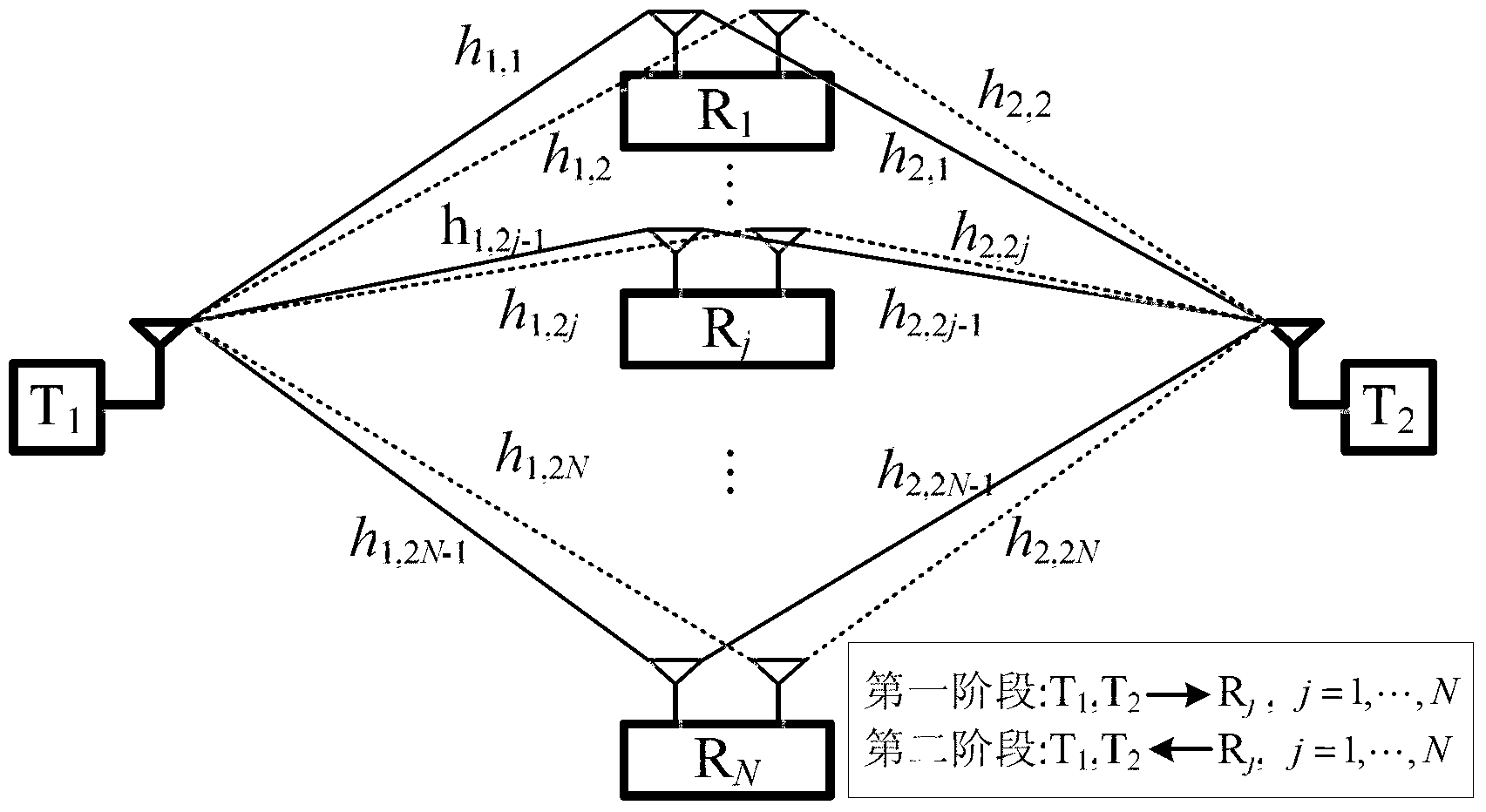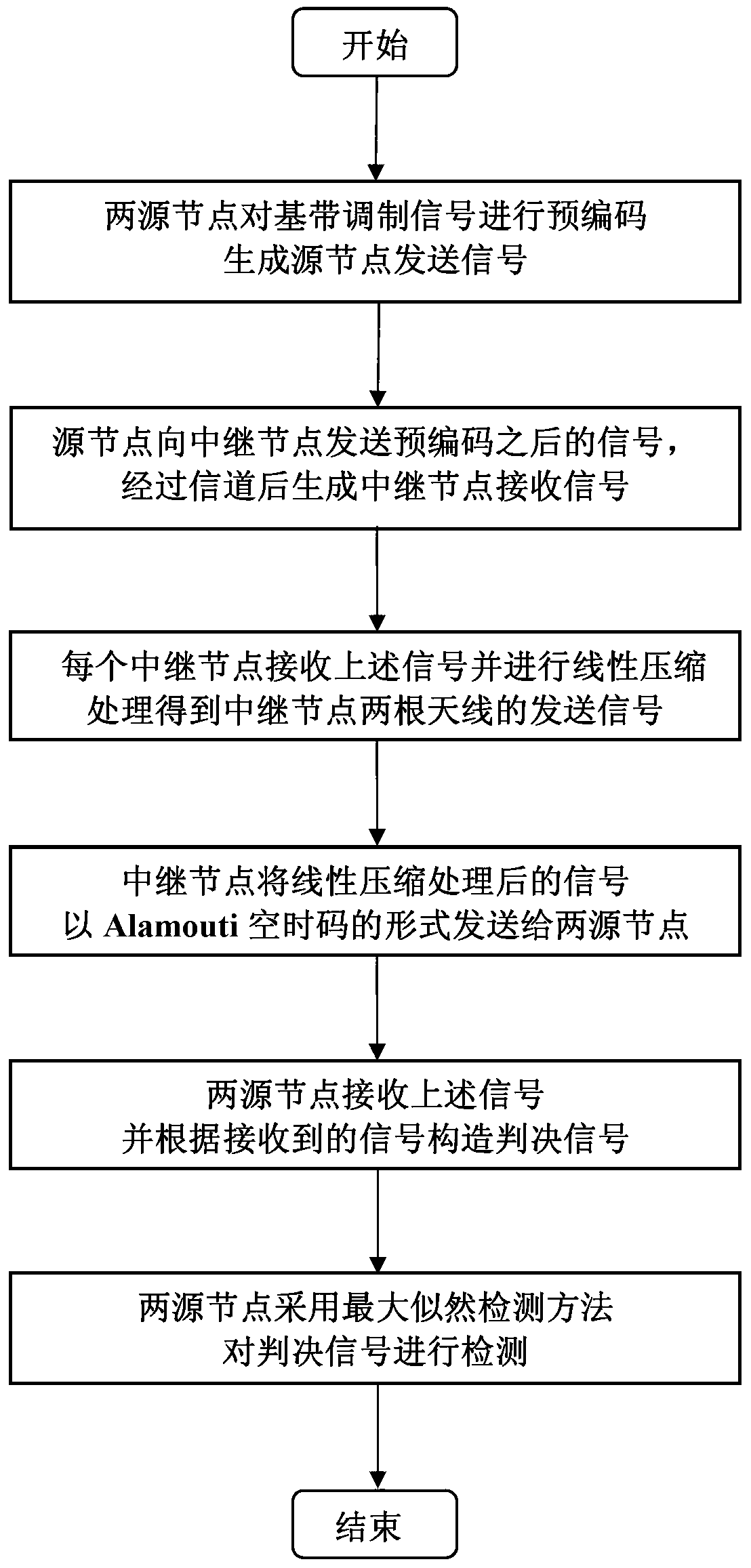Distributed loop overlap space time code transmission method based on bidirectional multi-relay network
A transmission method and relay network technology, applied in the field of distributed space-time code transmission and two-way relay network, can solve the problems of high detection complexity at the receiving end and not considering the joint processing of signals received by multiple antennas.
- Summary
- Abstract
- Description
- Claims
- Application Information
AI Technical Summary
Problems solved by technology
Method used
Image
Examples
Embodiment Construction
[0032] The technical method of the present invention will be described in further detail below with reference to the accompanying drawings and embodiments.
[0033] refer to figure 1 , the present invention is applicable to two source nodes T in the system 1 , T 2 Configure single antenna respectively, N relay nodes R j Configure dual antennas separately, where j=1,...,N, N=2 b , b is a non-negative integer, and it is assumed that the sum of the transmission powers of the two source nodes and all relay nodes is 1.
[0034] In Phase I, two source nodes T 1 , T 2 Respectively for the baseband modulated signal x 1 、x 2 After precoding, send it to N relay nodes, and the relay node R j Receive the signal sent by the source node and get the signal r received by the relay node j ;
[0035] In the second stage, the relay node R j For the received signal r j Perform linear compression processing and send to two source nodes T through its two antennas in a certain form 1 , T ...
PUM
 Login to View More
Login to View More Abstract
Description
Claims
Application Information
 Login to View More
Login to View More - R&D
- Intellectual Property
- Life Sciences
- Materials
- Tech Scout
- Unparalleled Data Quality
- Higher Quality Content
- 60% Fewer Hallucinations
Browse by: Latest US Patents, China's latest patents, Technical Efficacy Thesaurus, Application Domain, Technology Topic, Popular Technical Reports.
© 2025 PatSnap. All rights reserved.Legal|Privacy policy|Modern Slavery Act Transparency Statement|Sitemap|About US| Contact US: help@patsnap.com



